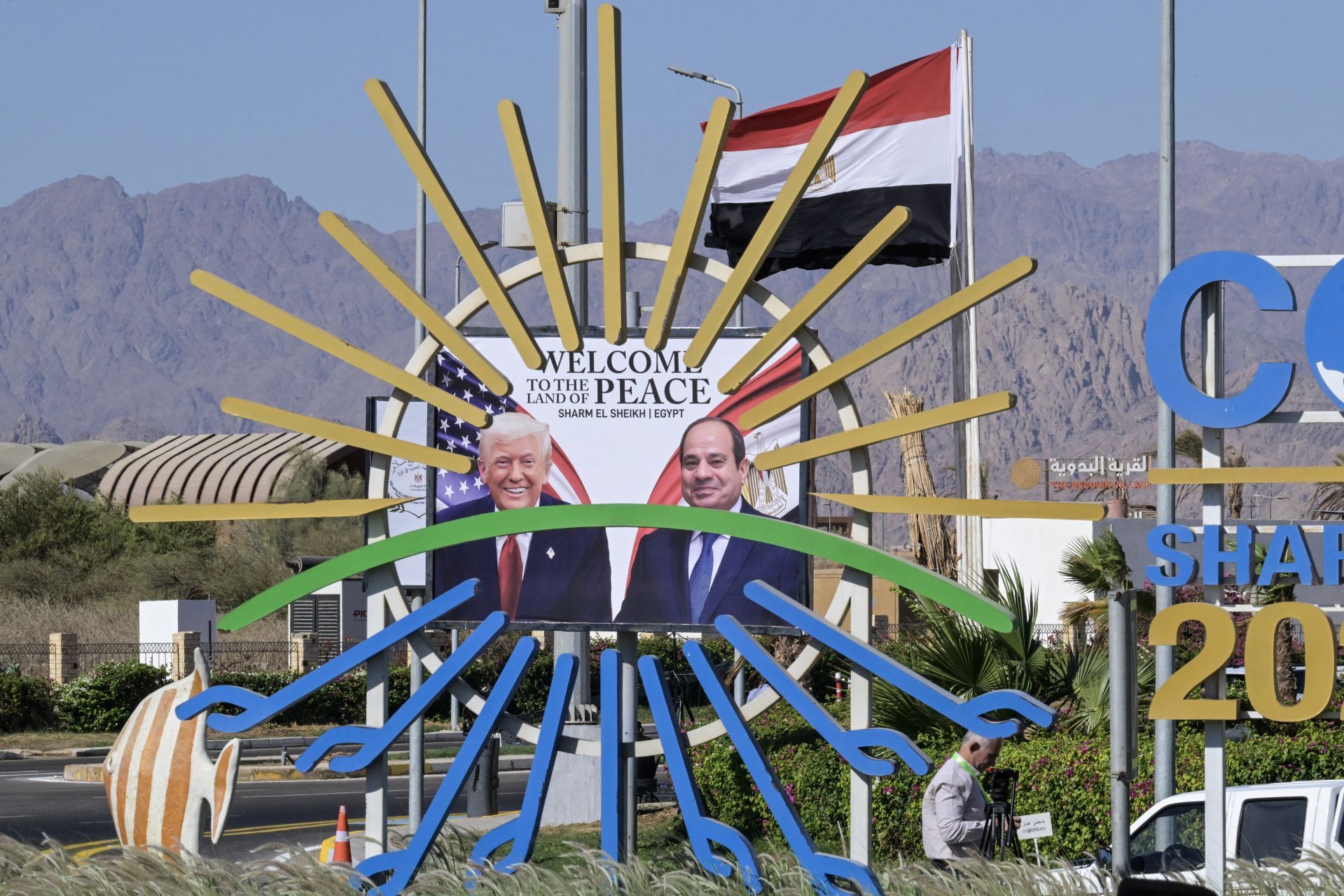- Home
- Middle East
- Trump Arrives in Sharm el-Sheikh After Hero’s Welcome in Jerusalem

Sharm el-Sheikh Summit: Trump and Sissi unite 20+ countries for Gaza peace. ©AFP
Donald Trump arrived in Egypt on Monday to co-chair a Gaza summit, following his address in Jerusalem, where he proclaimed an end to a “long nightmare” for Israelis and Palestinians on the day the last 20 living hostages were released in exchange for Palestinian prisoners.
The U.S. president, who initiated the plan that established a ceasefire in Gaza and aims to end two years of war in the territory, landed in Sharm el-Sheikh nearly three hours behind schedule.
Trump is set to co-chair the summit with Egyptian President Abdel Fattah al-Sissi, in the presence of leaders from numerous countries and UN Secretary-General Antonio Guterres. Neither Netanyahu nor Hamas are attending. Mediating countries are expected to sign a document in Sharm el-Sheikh ensuring the ceasefire’s implementation.
In Tel Aviv’s Hostages Square, jubilant scenes marked the release of hostages that Israel had awaited for 738 days. Some looked somber, others smiled, and many embraced. “It’s wonderful and overwhelming that this finally happens,” said Shelly Bar Nir, 34. “We’ve been fighting for over two years: our hostages are finally coming home.”
Hours later in Ramallah, West Bank, celebrations greeted the arrival of buses carrying released Palestinian prisoners. For many, these reunions marked the first taste of freedom in years or even decades. “It’s an indescribable feeling, a rebirth,” said Mahdi Ramadan, a freed prisoner, embraced by his parents.
Several buses then proceeded to Khan Younis in southern Gaza, welcomed by thousands waving Palestinian and Hamas flags.
The 20 hostages, released on the fourth day of the Israel-Hamas ceasefire, had been kidnapped on October 7, 2023, during an unprecedented Hamas attack on Israeli soil. Most of the 251 people taken at the time had been freed in two earlier truces. The attack triggered an Israeli offensive that caused tens of thousands of deaths in Gaza and a humanitarian disaster.
“The End of a War”
“This is not just the end of a war; it’s the end of an era of terror and death,” Trump said before the Israeli Parliament, receiving a standing ovation. He described the day as the end of “a long and painful nightmare” for both Israelis and Palestinians, urging Palestinians to “turn forever away from the path of terrorism” and announcing “the historic dawn of a new Middle East.”
Netanyahu hailed Trump as “the best friend Israel has ever had in the White House” and said he saw the possibility of quickly concluding new peace treaties with Arab countries thanks to him.
On Monday morning in Gaza, the first group of seven hostages, followed by another of 13, were handed over to the International Red Cross, whose vehicles headed to Israel under the watch of armed Hamas members in black uniforms, with no images of the releases released.
The first phase of the U.S. plan, returning the last 47 hostages held in Gaza—including 27 who had died—will coincide with Israel releasing 250 prisoners for “security reasons,” many convicted of deadly anti-Israel attacks, along with 1,700 Palestinians arrested in Gaza since October 2023. Under the plan, returning living hostages and remains was to conclude 72 hours after the ceasefire took effect, i.e., Monday at 09:00 GMT.
However, the Hostages’ Families Forum said only four bodies would be brought back from Gaza on Monday. The Israeli army confirmed that the Red Cross was en route to recover an unspecified number of remains after Hamas released the names of four hostages whose bodies it planned to return that day.
As the Israeli army continues its gradual withdrawal—currently controlling 53% of Gaza—the Trump plan envisions Hamas being removed from governance and its arsenal destroyed in a later phase.
“Searching for Landmarks”
In Gaza, hundreds of thousands of Palestinians displaced by the war have returned to the northern part of the territory, now a field of ruins. Fatima Salem, 38, struggles to recognize her neighborhood in Gaza City. “My eyes kept searching for landmarks, but nothing was the same; even neighbors’ houses were gone.”
Humanitarian aid trucks have begun entering Gaza via Israel, while others wait at the Gaza-Egypt border.
The October 7 attack left 1,219 Israelis dead, mostly civilians, according to AFP’s tally from official sources. Since then, 67,869 Palestinians have been killed in the Israeli offensive on Gaza, according to the territory’s health ministry, figures considered reliable by the UN.
AFP
Read more




Comments